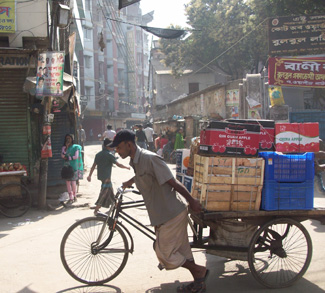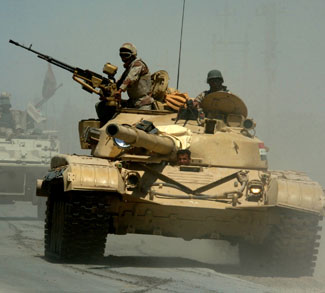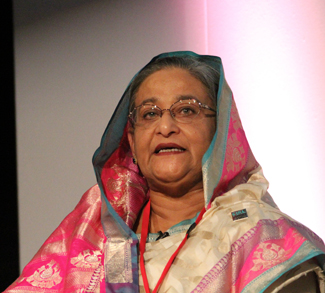Islamic State in recent times have intensified its campaign in Bangladesh, propagating its message of Khilafah through its media apparatus and as well as being operationally active inside Bangladesh with a string of attacks. The latest issue of Dabiq, which is the Islamic State’s official magazine, carried two articles that have relevance to the Islamic State’s connections to Bangladesh.
Islamic State has acknowledged the demise of a Bangladeshi national known by his nom de guerre, Abu Jandal al-Bangali. Dabiq states that Abu Jandal is an engineering dropout who was killed in action in Syria. The article also states that Abu Jandal forged his reference letter from college and succeeded in entering Syria on the pretext of traveling for an engineering conference in the Middle East. Apparently, Abu Jandal had volunteered for an istishhadi mission (suicide mission) and died as an inghimasi (suicide fighter) in the battle of Ayn Isa in Syria. This seems to be the first instance where a Bangladeshi national who traveled directly from Bangladesh to Syria has been killed fighting for Islamic State in Syria.
Earlier, a Bangladeshi national known by the nom de guerre Abul-Fida al-Banghali died as a suicide bomber in Bangladesh in an attack on a Mosque of Ahmadi Muslims in December 2015. Interestingly, earlier in 2014-2015, a coterie of five British nationals of Bangladeshi origin, known as the ‘Britani Brigade Bangladesh Bad Boys,’ were killed in Syria fighting for Islamic State.
More importantly, Dabiq carries an interview with Shaykh Abu Ibrahim al-Hanif, the amir of the Islamic State’s Bangladesh unit. In a message to the Muslim population of Bangladesh and the nearby regions, Shaykh Abu Ibrahim al-Hanif, appeals to “hasten to pledge allegiance to the Khalīfah of the Muslims and join the ranks of the Khilāfah’s soldiers.”
This interview assumes great significance as it focuses on two aspects which are pertinent to Islamic State’s strategy in Bangladesh and the region as a whole. Firstly, it trumpets the revival of jihad through Islamic State’s operations in Bangladesh. As already highlighted by Geopolitcalmonitor, Dabiq’s earlier issue (no 12) carried an article entitled “The Revival of Jihad in Bengal” which threw light on the intentions of Islamic State to revive the jihad in Bengal by perpetrating a series of primitive but effective attacks on foreign individuals and state symbols in Bangladesh.
From September to November 2015, Islamic State has carried out the assassination of foreign nationals, Cesare Tavella, Kunio Hoshi; fatal attacks on Bangladeshi nationals, killing Rahmat Ali from Awami league; attacks on individuals such as Piero Parolari and Ruhul Amin, wounding both of them; multiple bomb attacks on a Shia procession, killing one person; and an assault on a police checkpoint, killing one policeman. Between now and then, Islamic State operatives in Bangladesh have managed to conduct more such attacks, which are listed below:
- December 2015 – Islamic State conducted a suicide attack on an Ahmadi mosque in Bagmara area, and also carried out the assassination of Samir Uddin, a Christian convert.
- February 2016 – A Hindu business man and a Hindu priest named Jogeshwar Roy were killed by the Islamic State.
- March 2016 – A Shia preacher named Abdur Razzāq was hacked to death in Jhenaidah area in Bangladesh.
- April 2016 – An English professor named A.F.M. Rezaul Karim Siddiquee and a Hindu tailor were hacked to death by Islamic State.
Islamic State has claimed responsibility for all these attacks through its official magazine, Dabiq (#12&14) except for the killing of the Hindu tailor which was attributed to Islamic State by an Aamaq news agency. Yet another attack killed Julhash Mannan, a USAID worker and prominent gay rights activist, and his friend on April 25, 2016, though this was attributed to Al Qaeda in Indian Subcontinent. These acts have upped the stakes in the ongoing conflict between the Islamic State and Al Qaeda in Bangladesh.
By employing low-tech attacks against soft targets like individuals, Islamic State has been able to instill a sense of fear and trepidation in Bangladesh as well as among the international community. The Deputy Secretary of State of the US government, Antony Blinken recently went on the record to state that the attacks “give us concern about the potential for ISIL or Daesh to take root in Bangladesh. That is the last thing we want.”
These attacks could possibly indicate the intention and ability of Islamic State in Bangladesh at present, and also an intention to widen the target base initially consisting of foreign individuals to Bangladeshi individuals from other religious and political dispensations. Islamic State has also attacked individuals with progressive and secular thinking. This also signals a thinking which is in line with their intention to preserve hardline Islamic religious practices.
On the other hand, interestingly, Islamic State has deliberately stayed away from attacking hardened targets such as combatants except on one occasion. This could possibly indicate a deliberate ploy, showcasing that the Islamic State’s current ability to conduct more sophisticated attacks on hard targets appears to be limited. Acts of engaging soft targets using rudimentary weapons such as machetes and small arms are clear instances of Islamic State’s primitiveness in their style.
Secondly, this interview clearly strengthens the theory that Bangladesh is the centerpiece of Islamic State’s South Asia strategy. Shaykh Abu Ibrahim al-Hanif has emphasised that Bangladesh is an important region not only for the Khilafah but also a part of the global Jihad because of its geostrategic position. Given its proximity to India and Myanmar, Bangladesh could well play the role of a “stepping stone” for Jihadi activities in India and Myanmar as per Ibrahim Al-Hanif. According to the Dabiq interview, India could be outflanked from the Eastern front by the Islamic State in Bangladesh and by Islamic State in Afghanistan and Pakistan on the western side. This, according to Ibrahim Al-Hanif, would facilitate concomitant guerrilla attacks inside India from both the fronts, with the active help of Indian groups, leading to tawahhush (chaos) inside India and could possibly later pave way for a more conventional intervention in India after Pakistan and Afghanistan.
The Islamic State and Jama’atul Mujahideen Bangladesh – a Marriage of Convenience?
Given this background, Islamic State currently would be envisaging a ratcheting up of its activities in Bangladesh. This requires resources like men and money. There are indications that Islamic State has already gained a foothold with other hardline Islamic groups such as Jama’atul Mujahideen Bangladesh (JMB) in Bangladesh. JMB’s Rangpur regions chief Masud Rana had admitted to being behind the killing of Japanese national Kunio Hoshi in October 2015. Islamic State claimed responsibility for this attack, clearly enforcing the theory that a sizeable portion of JMB cadres are already under Islamic State’s fold.
Incidentally, Islamic State has recognized JMB as one of organizations in line with their ideology of implementing Islamic law. JMB was formed in the late 1990s and is now a banned organization in Bangladesh. The JMB has a hierarchical three-tier organizational structure. The first level of the outfit consists of activists called Ehsar numbering around 10,000, who are recruited as full-timers. The second tier, known as Gayeri Ehsar, has over 100,000 activists who are part timers. The third tier consists who indirectly facilitate and abet JMB activities. JMB has been known to finance its activities through non-governmental organizations and charitable fronts. In 2007, its top leaders including its commander Maulana Abdur Rahman were executed by the Bangladeshi government. However, JMB still remains active and dangerous not only in Bangladesh but also in neighboring India. JMB runs a series of Madrassas and seminaries across Bangladesh as well as in India.
A JMB module was discovered in Burdwan district of West Bengal in India in 2014 after an accidental explosion in one of their safe houses. According to the National Investigation Agency (NIA), JMB has a wide network in the states of West Bengal, Assam and Jharkhand in India. JMB is involved in radicalizing, recruitment, training of Indian youths in select Madrassas which act as training grounds for JMB in India. According to NIA, JMB has organizational bases in at least three districts of West Bengal. JMB started recruitment in India from 2008. However, there are no accurate figures on the Indian membership in JMB, which is believed to be in hundreds.
Though initially, JMB was confined only to eastern states of West Bengal, Assam and Jharkhand in India, its members have started to span out across India. Recently, Mohammed Abdul Rashid, a JMB operative who was part of the Burdwan module was arrested in Chennai located in India’s South. Given this depth of the JMB network in India, the threat to carry out attacks inside India by Ibrahim Al-Hanif appears to be possible and imminent. The JMB cadres could, with a flick of a switch, owe allegiance to the Islamic State given their ideological proximity and could possibly cause havoc inside India.
To conclude, given the centrality of Islamic State’s grandiose strategy to counter India, the Islamic State would certainly attempt everything to appropriate the ideology and the cadres of JMB in Bangladesh. The frequency and rapidity of terror operations in Bangladesh by the Islamic State and its repeated attempts to propagate the revival of jihad in Bangladesh through successive Dabiq issues, appears to be aimed at engineering the opinions of the hard line constituents such as JMB in Bangladesh with a primary focus of orchestrating their marriage with the Islamic State.




